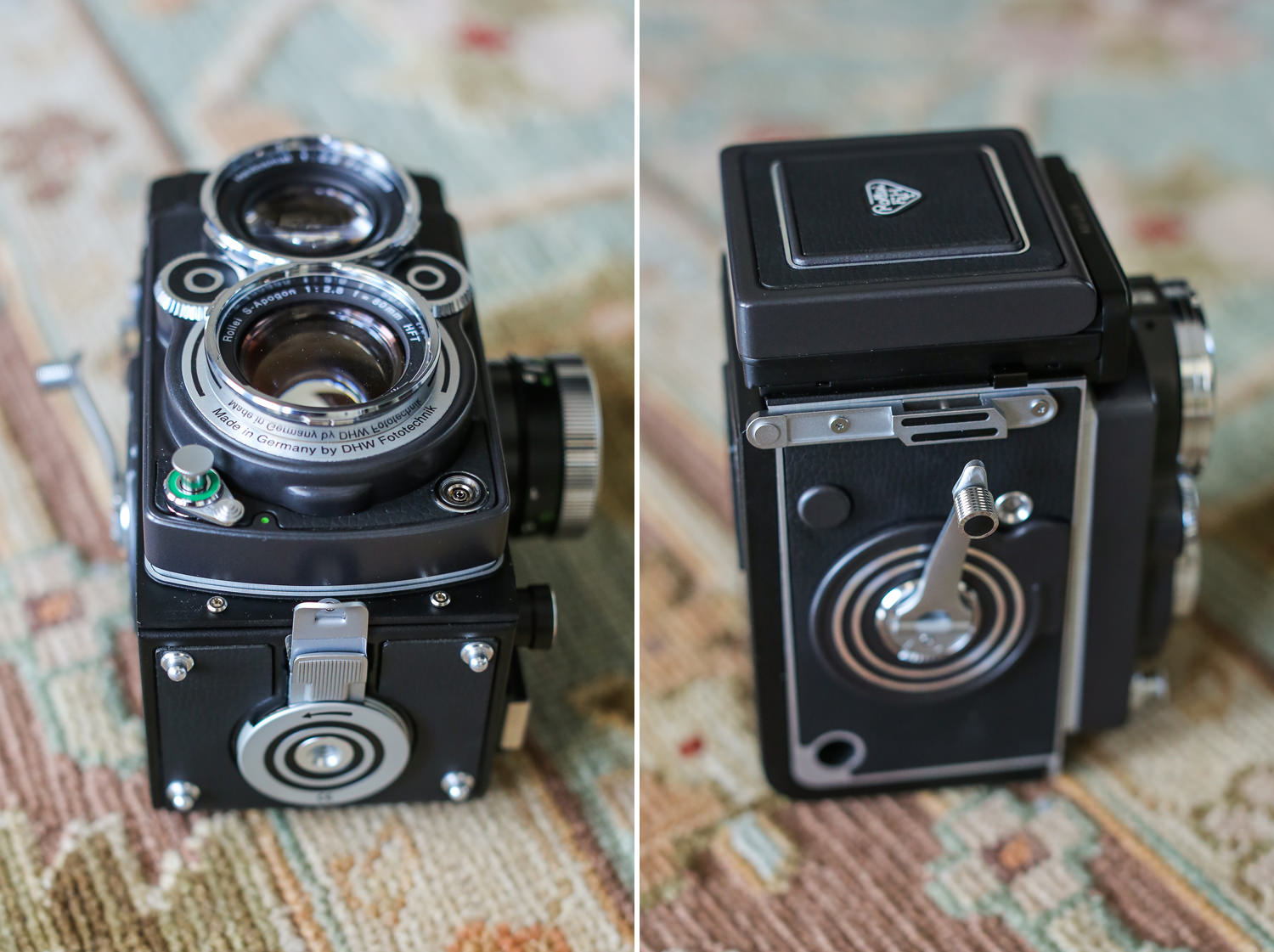


It was clear that the company had no good direction for the future and needed outside help. In the early 1960s, Franke & Heidecke started to release new products like a slide projector and 16mm camera, but nothing that made any significant dent in the marketplace.
ROLLEIFLEX 2.8 POLOROID PROFESSIONAL
Professional and advanced amateur photographers already had their Rolleiflexes, and with increased competition from the Japanese camera industry and new 35mm SLRs from Nippon Kogaku, and quality professional cameras from Hasselblad, sales started to stagnate. Buoyed by the success of the Rolleiflex and the engineering prowess of Reinhold Hedecke, the company still remained profitable despite it’s leadership woes.īy the end of the 1950s, Franke & Heidecke’s success started to slow. The younger Franke lacked the leadership and business know-how that his father had, and throughout the 1950s would make several business decisions to the detriment of the company. Unfortunately, in 1950, Paul Franke would fall ill and suddenly pass away, leaving the business to his son, Horst. With the combined leadership of both men, Franke & Heidecke was well suited to develop, create, market, and sell their products all over the world. Reinhold Heidecke on the other hand was responsible for the engineering and design that made the company’s cameras successful. He ran the business efficiently and allowed the business to grow. Franke had a keen business ethic which under his leadership allowed the company to secure strong bonds with suppliers and distributors alike.

One of the reasons that Franke & Heidecke was so successful was because of the leadership of both Paul Franke and Reinhold Heidecke. Some Rolleiflex clones copied the design very closely, and others changed the formula a bit, but they all retained the same basic shape and form factor. Like the Leica II rangefinder built by Ernst Leitz, the Rolleiflex would become an often copied camera, with models produced by a huge number of German, American, and Japanese companies. Image courtest of New Zealand Geographic.īy the early 1930s, the Rolleiflex would become an immediate hit and would have unparalleled success over the next several decades. Although twin lens designs had existed before the Rolleiflex, Franke & Heidecke’s new camera would set the standard for which all TLRs would follow, both from a design and functionality standpoint. By 1929, the company’s first twin lens reflex (TLR) called the Rolleiflex was released. The Franke & Heidecke Heidoscop was a medium format stereo camera made in the 1920s.įranke & Heidecke’s stereo cameras were a huge hit and by 1927 allowed the company to expand their portfolio and try out some new designs.

All three lenses were arranged horizontally and generally used Zeiss lenses and Compur shutters. These cameras all had a similar form factor of twin “taking” lenses and a third viewfinder lens in the middle. Their first products were a line of plate film and roll film stereo cameras called the Heidoscop and later the Rolleidoscop. The company was originally founded in 1920 by two former Voigtländer employees, Paul Franke and Reinhold Heidecke in Braunschweig, Germany. The name “Rolleiflex” or simply “Rollei” refers to a brand of cameras produced by a company called Werkstatt für Feinmechanik und Optik, Franke & Heidecke (or Franke & Heidecke for short). Putting aside the things it doesn’t have, what the S元5 does well, it does REALLY well and for that, it’s a worthy addition to any collection. There are many subtle improvements that this camera has which aren’t immediately obvious when first looking at it, but that comes at the expense of modern (for the time) features, which was a disappointment. This camera is heavily inspired by the Pentax Spotmatic and has Japanese style, but with German levels of quality. The Rolleiflex S元5 is a late entry into the 35mm SLR market by a company who didn’t have a lot of experience with 35mm SLRs. Weight: 594 grams (body only) / 779 grams (w/ Planar lens) Viewfinder: Fixed SLR Prism with Microprism focus aideĮxposure Meter: Twin CdS Cell w/ viewfinder match needleįlash Mount: PC-port with FP and X Flash Sync Lens: 50mm f/1.8 Zeiss Planar coated 7-elements Although this camera had extraordinary build quality and is often found with an excellent 7-element Zeiss Planar lens, it lacked open aperture metering, a feature that most other SLRs of the day had. The S元5 was the first 35mm SLR to bear the Rolleiflex name and introduced an all new QBM “Quick Bayonet Mount” unique to these cameras. Earlier versions like this one were made in Germany, later ones in Singapore. This is a Rolleiflex S元5 single lens reflex 35mm camera made by Franke & Heidecke of Braunschweig, Germany between the years 19.


 0 kommentar(er)
0 kommentar(er)
